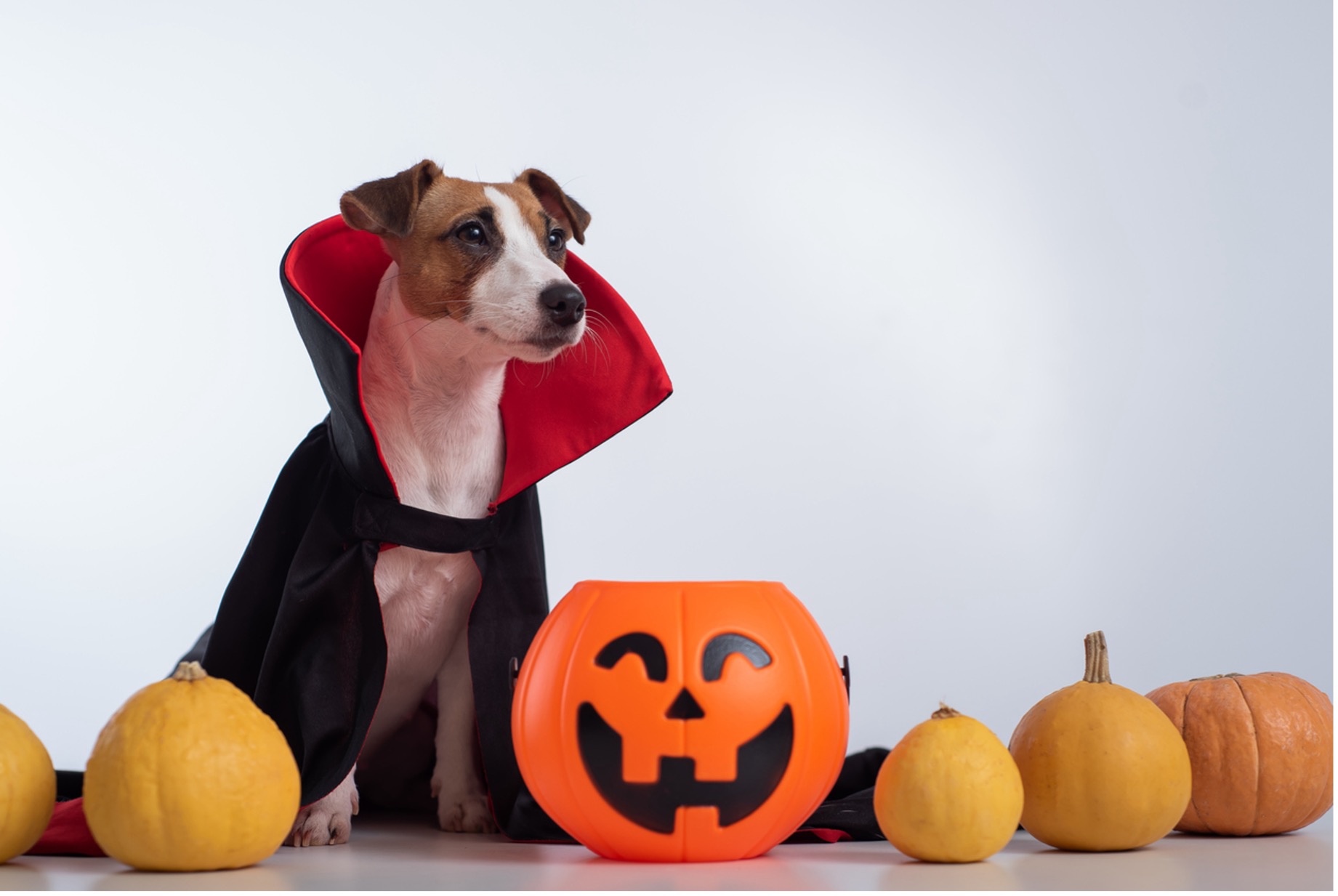Dressing up, scaring your neighbors, and eating candy, who doesn’t love Halloween? Although Halloween provides fun entertainment for humans, the fear factor is very real for our pets! Follow these tips for Halloween safety to provide an enjoyable night for all you love.
Should You Dress Up Your Pet?
Almost 20% of Americans dressed up their pet in 2021. Many cats and dogs look adorable in costume, but owners should evaluate their pet’s comfort level. Some dogs are used to wearing coats and sweaters, but others only wear collars. Most cats don’t even wear collars! Wearing a costume can be a strange, even alarming sensation for a pet.
Selecting a Costume for Your Pet
When selecting a costume for your pet, carefully evaluate the costume’s features. Loose fabric or dangling items could get caught on furniture, causing panic and even strangulation. Monitor young pets closely; if left alone to chew at their costume, intestinal discomfort or a blockage could result. Carefully evaluate your pet’s body language when introducing the outfit. Fearful dogs may tuck their tail, try to slink away, pant excessively, yawn, tremble or try to avoid eye contact and physical contact. Frightened cats may lash out, have dilated pupils, hold their ears back, flatten their bodies or stare at their owner. Do not force your pet into the costume if you see signs of fear.
Be Wise to Keeping Your Pet Calm
Not only can wearing their own costume make them nervous, but pets can also become nervous when seeing a human, even a member of their own house, dressed in a costume. If your pet suffers anxiety when visitors come over, make preparations before Halloween. Please keep your pet confined in a quiet room of the house where they won’t be disturbed by visitors or accidentally escape. Halloween is the 2nd most common day of the year for pets to be lost. Dog bite incidents also increase on Halloween. Adding an Adaptil brand collar or diffuser for dogs or a Feliway diffuser for cats will naturally calm pets using pheromones. A veterinarian can also prescribe calming pharmaceuticals.
Be Watchful of the Sweet Treats around Your Pet
Finally, pets may be poisoned by the extra sweet treats in the home. When ingested, sugar-free products containing Xylitol will cause hypoglycemia in pets. Hypoglycemia left untreated, can be deadly. Xylitol can also cause liver failure.
Chocolate can cause illness when ingested. The severity of the dog’s reaction to the chocolate depends on the type of chocolate ingested, the amount of chocolate consumed, and the dog’s weight. Chocolate consumption can cause increased heart rate and nervous system stimulation. Dog Chocolate Toxicity Meter – When to Worry | PetMD can be used to calculate whether your dog ate enough chocolate to cause a problem. When in question, call your veterinarian or the poison hotline to determine your dog’s risk.
Chocolate is toxic to cats as well and reactions can be as bad, or worse in cats. Darker chocolates and baking chocolates are the most dangerous, even in small amounts. That said, even white chocolate can potentially cause issues in cats due to their small size. You can read more about chocolate toxicity in cats from PETMD, Can Cats Eat Chocolate?
Final Words
Protect your pet from his anxieties this Halloween. Selecting costumes carefully, screening visitors, and keeping the candy out of reach is a recipe for a Happy Halloween.
Dr. Janelle McFarland
Wags & Whiskers
